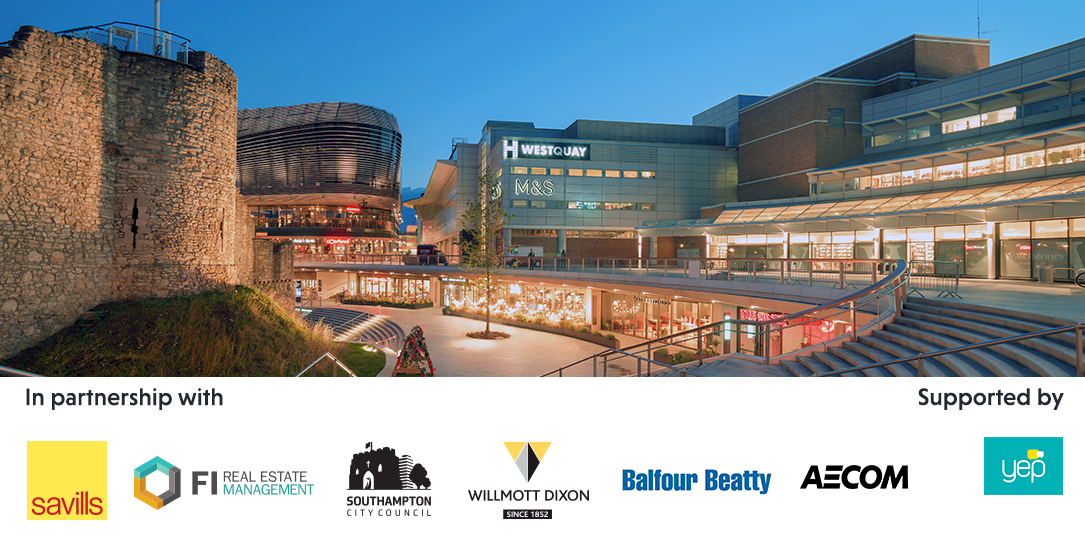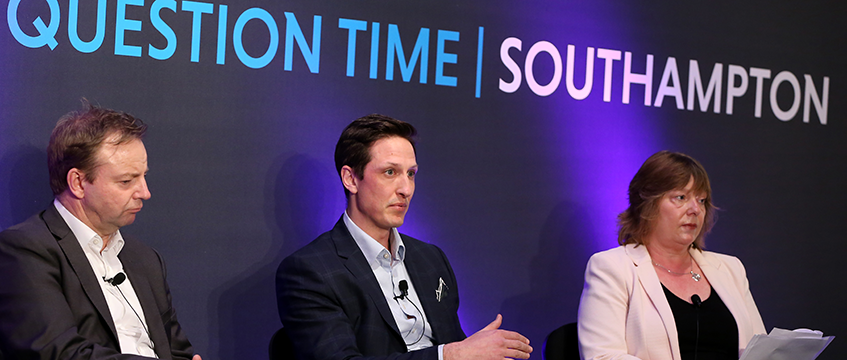Building on the growth sparked by the launch of Southampton’s masterplan six years ago is the main priority for the coastal city’s council as it embarks on the second phase of its plan to attract £3bn of investment by 2030.
To date, £2.9bn of committed investment has been secured for projects across Southampton, and schemes such as Studio 144, a cultural hub in the city centre, have completed. Meanwhile work has begun on new neighbourhoods including Meridian Waterside and Centenary Quay, on the banks of the River Itchen.
And the council is now looking to secure another £3bn of investment between now and 2030, as additional projects, including the Central Business District, come forward.
But some projects appear to have stalled, such as the 2m sq ft mixed-use waterfront scheme Royal Pier being delivered by RPW (Southampton), which is solely owned by the GB Strategic Land Fund.
A lack of high-quality office space has also affected Southampton and businesses have departed the city centre because of it, said Nick Jones, director, cost and project management and head of the Southampton office at Aecom during the latest EG Question Time event in Southampton.
“We’ve got second-biggest port in the UK. There’s a need for warehousing and the facilities to support supply chains and yet no one seems to want that on their land.”
He added that unless the infrastructure in the region isn’t “sorted out”, development and therefore growth would be stifled.
Data from Savills shows that there was no new city centre building last year when office take-up in city totalled 157,000 sq ft – which is dwarfed by the long-term average of 265,000 sq ft. Data from EG shows an 18% drop in office take-up in 2017 on 2016.
Sally Thompson, chief executive and founder of Launch International and the founding chief executive of Business South, called for a new strategic planning and regeneration authority that spans the region to accelerate developments and stop nimbyism by local authorities.
“We’ve got second-biggest port in the UK. There’s a need for warehousing and the facilities to support supply chains and yet no one seems to want that on their land. That can lead to some market reduction and companies and businesses looking for other solutions in other ports,” she said.
Mike Harris, director of growth at Southampton City Council, expressed frustration that some office schemes in the city that had planning had not come to fruition. But he said the council “now recognised that over the next few years office building is going to be absolutely vital for us. Our policy is to get new grade A office space and we need to work hard to do that.”
Promoting office development
Kevin Marsh, director and head of licensed leisure at Savills, added: “The council has an opportunity to try to promote some new [office] development.
“The council has to compete with other local authorities to try and find occupiers that will come and locate themselves in the borough and city centre. There certainly seems to be the opportunity, with the landholding the council have got to promote some of these sites themselves.”
James Raspin, head of asset management at FI Real Estate Management, which is working on a major mixed-use development facing Southampton train station, said it was quality that would deliver value.
“Growth is the lifeblood of any property market,” he said. “We’re always looking at the best development we can do. You always welcome new and better development. It creates a new benchmark in the city. It helps drive value.”
And Brian Hammersley, contract director of Balfour Beatty Living Places, was optimistic about Southampton’s prospects too. “I think we’re in good shape to deliver regeneration projects,” he said.
He said he agreed “in principle” with Thompson, adding: “I think the likelihood of us getting to that all-encompassing authority, unfortunately, is very limited. So I think really the challenge is for the authorities to be collaborative and try and work together in those areas where there is a conflict of ideals and agendas to deliver what’s right. At times, all sides need to be more collaborative and flexible.”

Twitter feedback
Great that panel are discussing transport issues. Traffic literally & figuratively chokes local communities. Reviving Solent Metro would make a huge difference #EGQT
— Nathan Brown (@nath_brown) March 27, 2018
We need to encourage #urbanisation & create more #office #opportunities to ensure that we don’t lose key corporate #occupiers in the city centre. This will help alleviate #pollution in #Southampton as they won’t need to travel out of the city! #egqt
— Nella Pang JLL (@NellaPang) March 27, 2018
#egqt @InvestSoton
Positive picture of future developments in the city to continue the drive for economic growth @nrpguk pic.twitter.com/oJozYpOZ2s— Allan Gordon (@AllanGordon11) March 27, 2018
@BizSouth great turnout for Southampton’s Estates Gazette Event @InvestSoton #egqt pic.twitter.com/4HqWv49wwf
— Leigh-Sara (@LSTimberlake1) March 27, 2018
Had a good chat with @DamianWild after @EstatesGazette #EGQT about gender balance on panel and with those who asked questions. Let’s address this before the next #Southampton QT . Many fantastic women working in city futures. Their voices need to be heard 50:50 with men.
— Rebecca Kinge (@kinge_rebecca) March 28, 2018
To send feedback, e-mail Louise.Dransfield@egi.co.uk or tweet @DransfieldL or @estatesgazette


















